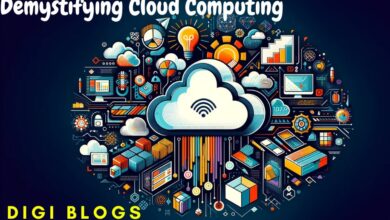Crafting AI SaaS Solutions: A Complete Handbook

In today’s digital landscape, the convergence of Artificial Intelligence (AI) and Software as a Service (SaaS) has unlocked unprecedented opportunities for businesses to innovate and deliver intelligent solutions to customers worldwide. This comprehensive guide explores the process of building an AI SaaS product, from conceptualization to deployment, with a focus on two key domains: AI for IT Service Management (ITSM) and AI in Treasury Management. By leveraging AI technologies, businesses can enhance operational efficiency, drive cost savings, and unlock new revenue streams while delivering value-added services to their clients.
Understanding AI in SaaS
In the ever-evolving landscape of technology, the fusion of Artificial Intelligence (AI) and Software as a Service (SaaS) has ushered in a new era of innovation and efficiency. The article is your definitive guide to navigating the complex terrain to build AI SaaS products.
Exploring the Intersection of AI and SaaS
AI SaaS products leverage artificial intelligence to deliver intelligent, scalable, and customizable solutions to users through a subscription-based model. These products harness the power of machine learning, natural language processing, and other AI technologies to automate tasks, optimize processes, and deliver actionable insights in real-time.
Key Benefits of AI SaaS Products
- Scalability: AI SaaS products can scale rapidly to meet the evolving needs of users, from small businesses to large enterprises.
- Cost Savings: By eliminating the need for on-premises infrastructure and maintenance, AI SaaS products offer cost-effective solutions for businesses of all sizes.
- Continuous Improvement: AI algorithms can learn and adapt over time, continuously improving performance and delivering value-added features to users.
- Accessibility: SaaS delivery models enable users to access AI-powered solutions from anywhere, at any time, using any internet-connected device.
Building an AI SaaS Product: Key Considerations
Identifying Market Opportunities
Analyzing Market Trends
Research market trends and identify opportunities for AI-powered solutions in niche domains such as ITSM and Treasury Management. Evaluate market demand, competition, and customer pain points to define the target market and positioning strategy for the AI SaaS product.
Understanding Customer Needs
Conduct surveys, interviews, and focus groups to gather insights into customer needs, preferences, and pain points related to ITSM and Treasury Management. Identify key features, functionalities, and use cases that will address customer challenges and deliver measurable value.
Designing the Solution Architecture
Defining Functional Requirements
Translate customer needs and use cases into functional requirements for the AI SaaS product. Define features such as incident management, problem resolution, change management, and asset tracking for ITSM solutions, and features such as cash forecasting, risk management, and liquidity planning for Treasury Management solutions.
Selecting AI Technologies
Choose appropriate AI technologies and algorithms to power the AI SaaS product, such as machine learning models for predictive analytics, natural language processing for text analysis, and robotic process automation for workflow automation. Consider factors such as scalability, performance, and ease of integration with existing systems.
Developing the AI SaaS Product
Agile Development Methodology
Adopt an agile development methodology to iteratively build and deploy the AI SaaS product. Break down the development process into smaller, manageable tasks, or sprints, and prioritize feature development based on customer feedback and market demand.
Collaborative Development Process
Foster collaboration between cross-functional teams, including product management, engineering, design, and quality assurance, to ensure alignment with customer needs and product goals. Leverage cloud-based collaboration tools and version control systems to streamline communication and coordination.
Testing and Quality Assurance
Automated Testing Frameworks
Implement automated testing frameworks to validate the functionality, performance, and security of the AI SaaS product. Conduct unit tests, integration tests, and end-to-end tests to identify and fix bugs, errors, and vulnerabilities throughout the development lifecycle.
User Acceptance Testing
Engage end-users in user acceptance testing (UAT) to gather feedback on the usability, functionality, and performance of the AI SaaS product. Incorporate user feedback into iterative development cycles to ensure the product meets customer expectations and delivers value.
AI for IT Service Management (ITSM)
Streamlining Service Delivery
AI for ITSM solutions automate routine tasks such as incident management, problem resolution, and service request fulfillment, enabling IT teams to focus on strategic initiatives and deliver faster, more efficient service to end-users.
Predictive Analytics
AI algorithms analyze historical data to predict and prevent IT incidents before they occur, reducing downtime, improving system reliability, and minimizing business disruptions.
AI in Treasury Management
Cash Forecasting
AI in treasury management solutions leverage machine learning algorithms to analyze historical cash flow data and predict future cash positions with greater accuracy, enabling organizations to optimize liquidity and working capital management.
Risk Management
AI algorithms analyze market data, economic indicators, and geopolitical events to identify and mitigate risks such as market volatility, credit defaults, and currency fluctuations, enabling organizations to make informed decisions and protect financial assets.
Conclusion
Building an AI SaaS product requires careful planning, collaboration, and execution across multiple stages of the product development lifecycle. By identifying market opportunities, designing scalable architectures, and leveraging AI technologies, businesses can create innovative solutions that address customer needs and deliver measurable value in domains such as ITSM and Treasury Management. With a focus on continuous improvement and customer-centricity, AI SaaS products have the potential to transform industries, drive business growth, and shape the future of technology-enabled services.





